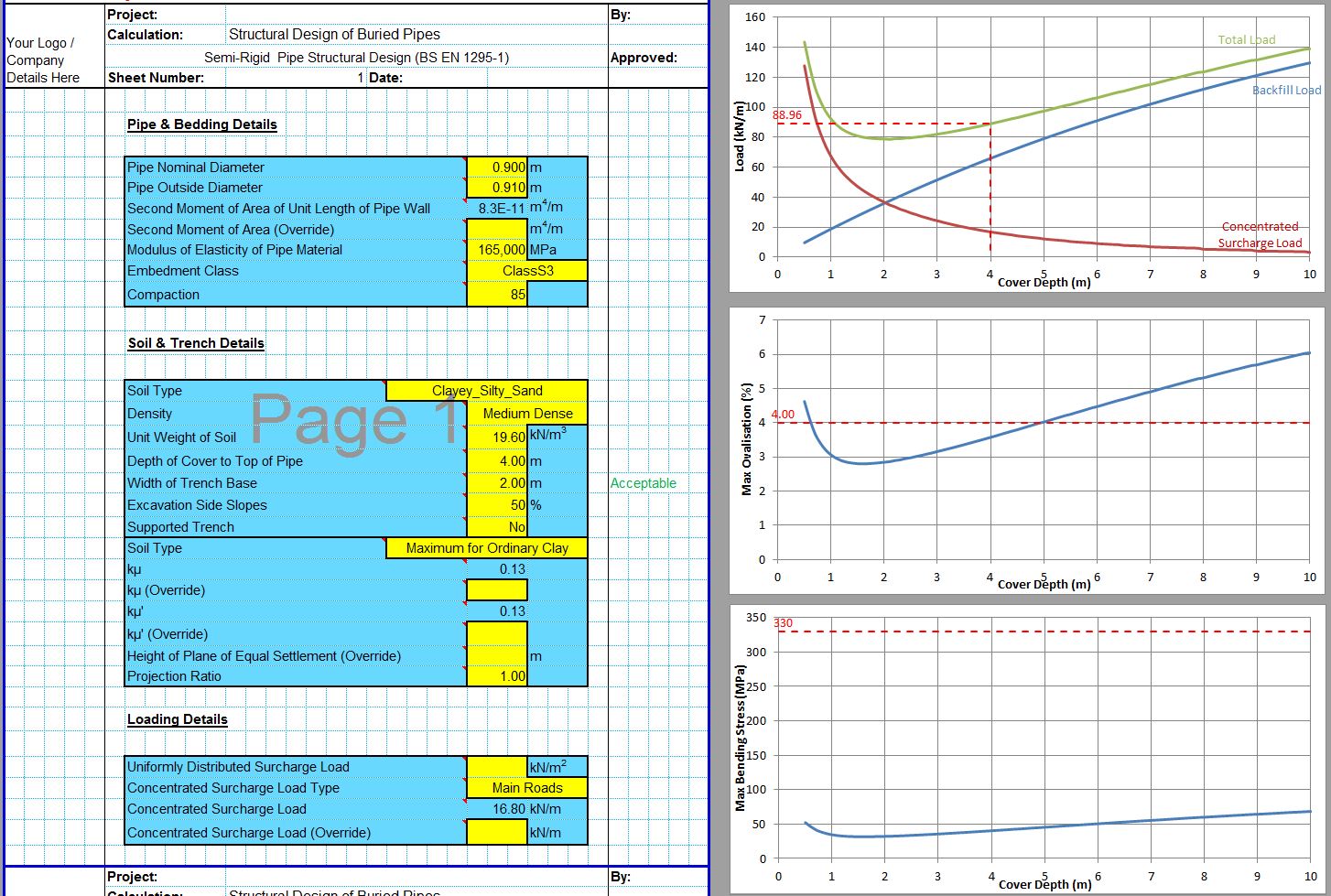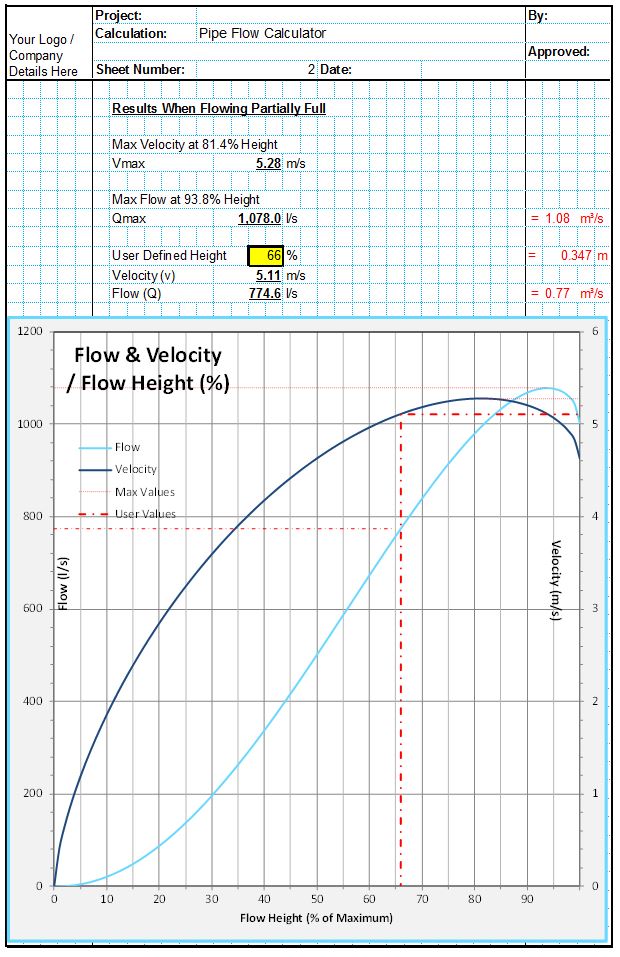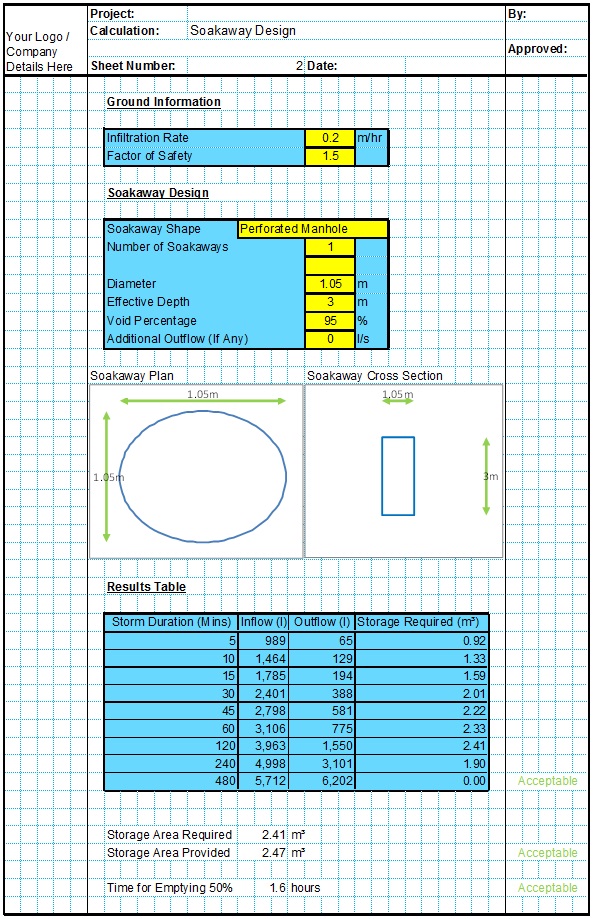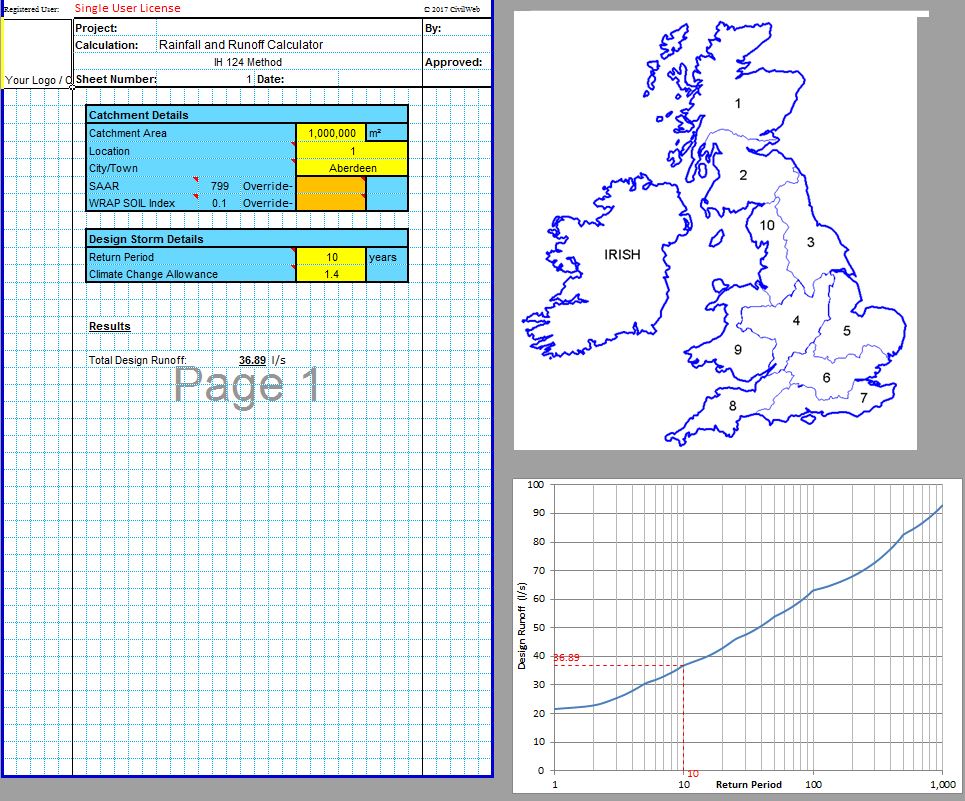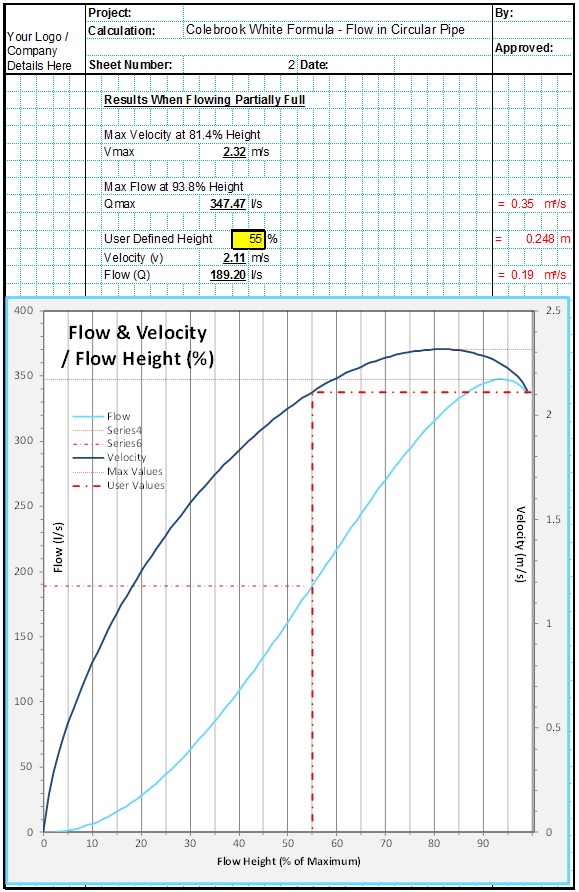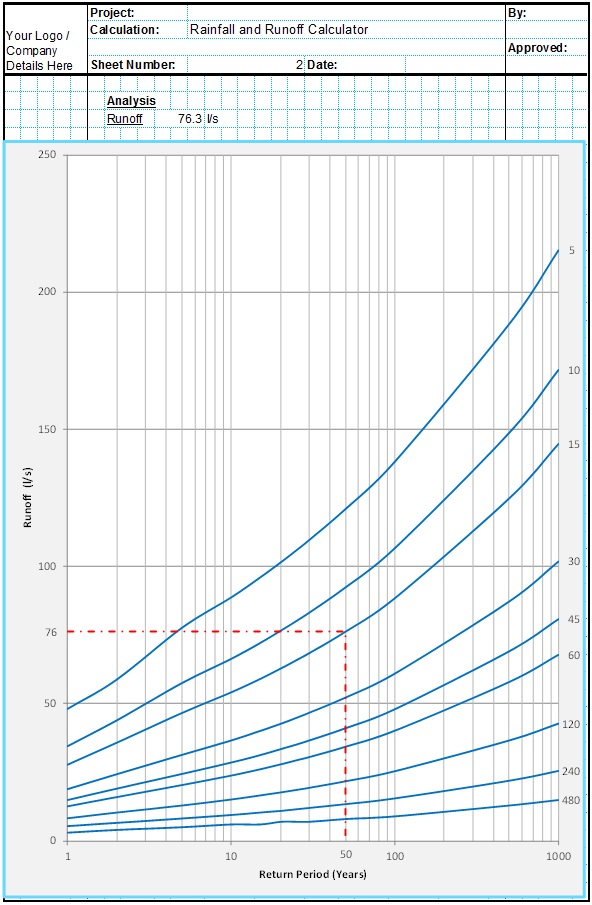The perforated pipe design for french drain systems is critical in ensuring that the french drain can accommodate the required volume of rainfall runoff water. The perforated drain must be able to fulfill two functions. Firstly the required volume of runoff water must be able to enter the pipe quickly enough. Secondly the perforated pipe must be large enough to convey the required volume of runoff water. If either of these conditions is not met then the perforated pipe design is not adequate and the french drain will back up and may flood during the design storm event.
The CivilWeb French Drain Design spreadsheet includes analysis modules to complete both these perforated pipe drainage system calculations to ensure that the french drain is fit for purpose. The spreadsheet completes the calculations following the SUDS manual procedure as detailed below.
Perforated Pipe Design - Perforations
The inflow capacity of the perforated underdrain pipe design needs to be checked that it is sufficiently large to accept the maximum flow from the design flood. The following equation can be used to calculate the inflow through each orifice (Q);
Coefficient of Discharge (Cd)
This coefficient accounts for the different inflow rates achieved by different types of orifices. This coefficient can be taken as 0.6 if the pipe wall is thinner than the orifice diameter, 0.8 if the pipe wall is thicker than the orifice diameter and 0.92 if the edges of the orifice are rounded.
Area of Orifice (A0) m2
This is the area of each orifice. Areas given in mm2 can be converted to m2 by multiplying by 10^6.
Hydraulic Head (h) m
This is the head of water pushing the water through the orifice. This is assumed to be at least the diameter of the pipe.
Acceleration Due to Gravity (g) m/s2
This is typically taken as 9.81m/s2.
The calculated inflow rate for each orifice is then multiplied by the number of orifices in the length of pipe being considered. This gives the total inflow capacity of the perforated pipe which can then be compared with the flow rate through the stone and the required flow from the design storm.
Generally the pipe manufacturer’s know roughly what the inflow capacity of the pipe will need to be as the pipe diameter will have a maximum conveyance capacity. Therefore the perforations can be made large enough for the inflow to be larger than the conveyance capacity of the pipe installed at a reasonable grade. For this reason the inflow capacity of the pipe is rarely more critical than the conveyance capacity. However the inflow capacity should still be checked as part of the french drain design process, particularly where the designer may be concerned about some of the perforations becoming clogged over time.
Perforated Pipe Design - Hydraulic Capacity of the Pipe
The capacity of the pipe to transmit the flow of water must also be sufficient to accommodate the design runoff flow. The SUDS Manual recommends using the Colebrook White equation as per normal drain pipe design which is generally considered acceptable even when the pipe is perforated to allow inflow from the surrounding soils.
The CivilWeb French Drain Design spreadsheet uses the Colebrook-White equation to determine the size of perforated pipe required. The Colebrook-White equation is shown below where g is the acceleration due to gravity, D is the pipe diameter, JE is the slope of the pipe, vk is the kinematic viscosity of the water and ks is the roughness coefficient of the pipe.
The hydraulic capacity of the proposed french drain is then checked against the required flow rate to determine whether the proposed french drain size is adequate. The required runoff flow rate is determined as per the procedure outlined in our French Drain Runoff post.
If the capacity of the pipe is not sufficient either the designer can specify a larger diameter pipe or the french drain grade can be increased. A larger pipe or greater inflow capacity can also help to prevent the french drain from becoming clogged.
In some cases this simple Colebrook-White evaluation may not be suitable for the perforated pipe drainage system design. This can be the case for non-circular pipe sections, pipes with expected sedimentation or where the water velocity is also a consideration. In these cases a separate flow calculator such as the CivilWeb Pipe Flow Calculator can be used to give a more detailed hydraulic analysis. In some cases a more detailed analysis of the french drain as a spatially varied flow system may also be required. The CivilWeb French Drain Design Spreadsheet includes a tool for analyzing the pipe as a spatially varied flow system.
Get your copy of the CivilWeb French Drain Design spreadsheet now for only £20.
Or why not bundle with the CivilWeb Soakaway Design spreadsheet for only £5 extra?
Or save £50 by buying our full Drainage Design Suite including all our drainage design spreadsheets.
Download Free Trial Version
To try out a fully functional free trial version of this software, please Click Here or enter your email address below to sign up to our newsletter.


